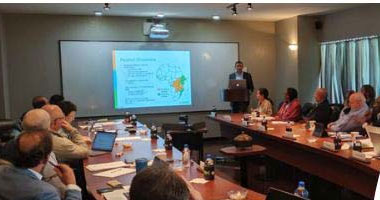Robotic Process Automation: Getting the Most from Your Investment

Rodger Howell, Principal, PwC and
Thomas Torlone, U.S. Leader of Enterprise
Business Services, PwC
Robotic Process Automation (RPA) is catching the attention of companies across sectors—and no wonder. RPA can mimic a human’s actions to access a company’s disparate systems (ERP, sales, tax, etc.), review thousands of documents in significantly less time, move data between programs, and put the data in a standardized format without error, ultimately helping companies become leaner, stronger, and more ready for growth. The first step companies usually take when considering RPA for the enterprise is a Proof of Concept (POC) in order to determine feasibility. This is a prudent move involving a small select group within the company, but for a POC to be properly illuminating, executives need to understand what they are trying to prove. After all, RPA’s high adoption rate clearly shows the technology works. What a POC is trying to prove goes beyond the technology itself. What they really want to know is, what are the specific benefits to their company, and what issues does management need to consider? With this in mind, a POC should answer questions in five subject areas:
Business Needs:
As noted, the assumption should be that the technology works. The question is, does the technology’s functionality apply to the company’s specific business processes and systems? In other words, are there other areas of the business that could benefit from the RPA technology, and can the technology be applied in a way that satisfies business requirements.
Security Requirements:
IT and security managers need to be part of the discussion to understand if the RPA architecture will meet a company’s security policies. After all, the company’s existing security architecture is oriented toward humans doing the work. If activities get automated, the enterprise security architecture will need to reflect that.
Benefits Estimation:
Those considering RPA are often skeptical about the benefits it can deliver. The POC is a time to develop good estimates for those benefits. By reengineering the process during the POC, a company can see how much human effort can be freed up. But the benefits calculation can get complicated. The company may be able to automate 100% of some jobs, but only 30% of the others. How could the company best utilize the additional capacity created as a result of automation? Can new tasks be created to utilize the additional capacity? Can resources be redeployed to other tasks? Do employees become more efficient or less efficient? These are all questions to consider when estimating the benefits of implementing RPA into the enterprise.
Implementation Process:
The RPA implementation that occurs during the POC includes a very small select group/function and may involve a lot of trial and error to get it right. Executives need to be sure that the implementation process that ultimately works in this small setting—timeline, duration, stakeholder engagement, lessons learned--can also be applied in the large enterprise rollout.
Change Management/Communication:
The automation that RPA brings can threaten employees; some might worry about their job security or simply resist changing their routines. Others employees might see opportunities to eliminate mundane tasks and work on more interesting projects. During the POC management needs to catalog all these issues, both good and bad, and develop clear messages to address them during the rollout. If senior management decides to proceed after exploring these five subject areas, they must turn their attention to scaling up from a small POC test group to a large, enterprise-wide RPA rollout.
Subscribe to Industry Era
News
This Apple Watch Case Could Kill All of Those Wannabe AI Devices
Google defends AI search results after they told us to put glue on pizza
Google scales back AI search answers after it told users to eat glue
FAA won't approve increased 737 Max production in near future
Thursday was a sour day for the US economy — with an important silver lining
OPEC+ working on complex production cut deal for 2024-2025, sources say
Stock futures inch lower as investors review earnings, brace for inflation report: Live updates
Salesforce Shares Plunge by Most Since 2008 After Weak Outlook
Jeep’s Wagoneer S Trailhawk concept teases a fully electric off-roader
Gap’s stock jumps 23% as the retailer swings to profit and raises guidance
Medline recalls 1.5 million bed rails linked to deaths of 2 women
Oil falls as Fed policymakers look to maintain rate cuts, gasoline stocks rise










